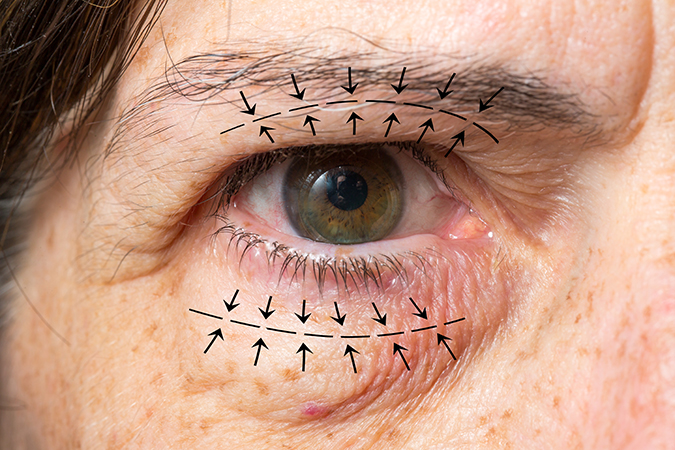The eyelids are a fundamental part of facial expression and attract much attention during social interactions. Commonly known as “bags,” they appear with age and give the impression of premature aging or fatigue, which nowadays can be greatly and safely improved. Eyelid cosmetic surgery has a very natural rejuvenating effect, without causing drastic changes to the appearance or visible scars. Unlike other cosmetic surgeries such as facelifts, it is less invasive, more affordable, and has a shorter, more comfortable postoperative period. For these reasons, it has become one of the most popular cosmetic surgeries worldwide.
Why choose an oculoplastic surgeon?
Considering the complexity of eyelid anatomy and its relationship with proper eye health, it is essential that an ophthalmologist specialized in oculoplastic surgery performs these procedures. Familiarity with the eyeball and surrounding structures is crucial to carry out these surgeries correctly and, above all, safely.
What is blepharoplasty?
Blepharoplasty is cosmetic surgery of the eyelids. In the upper eyelids, it involves removing excess skin and, sometimes, fatty tissue. The scar from this procedure is invisible, as it remains hidden in the natural fold of the upper eyelid. For the lower eyelids, blepharoplasty removes fat pads. This procedure is done by excising excess fat or redistributing fatty tissue. In this case, the surgery is performed through a transconjunctival approach, so there is no skin incision or visible scar. Sometimes, the skin of the lower eyelids needs treatment, which can be done surgically, with CO2 laser, or by chemical peel.
Procedure and postoperative care
Both upper and lower blepharoplasty are performed under local anesthesia and can be done at the same time. This surgery does not require hospitalization. In specific medical cases, general anesthesia may be used.
After the procedure, the eyes remain uncovered. Swelling and sometimes small bruises are common, especially during the first week. It is important to avoid physical exertion for one week and to apply cold compresses several times a day during the first three days. If sutures are used, they are removed between four and seven days after the surgery.


